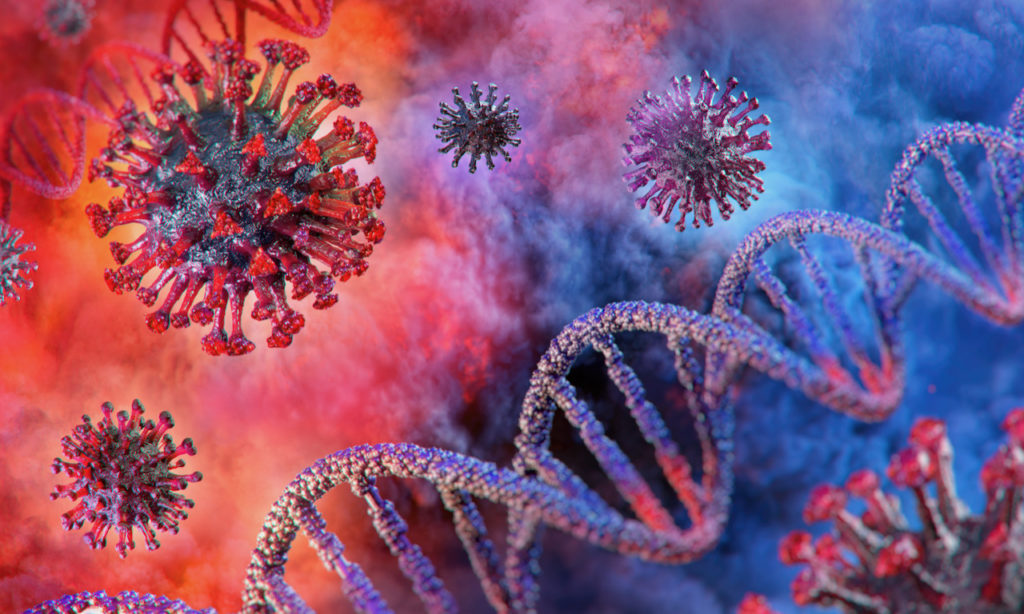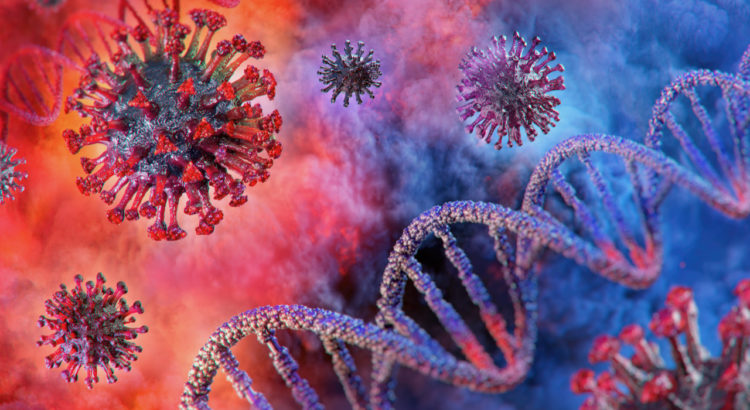
The complexity of the human immune system cannot be easily mimicked

The long-term implications of COVID-19 vaccines for both safety and long-term protective immunity remain largely unknown. It would be irresponsible to make premature claims.
The NHS advert seen below states that:
‘It’s much safer for your immune system to learn how to protect itself through a vaccine, than by catching the virus’.
Evidence is now emerging that natural immunity to SARS Cov-2 from previous infection is as good if not better than any of the current genetic therapy vaccines(1)(2). Indeed, previous infection by SARS Cov-2 creates a very robust immune response which is effective against many variants(3).
What is particularly baffling is that vaccination relies on harnessing the human immune system but there seems to be an ongoing quest within organizations such as the WHO and indeed the NHS to completely underplay the existence and importance of naturally acquired and pre-existing immunity, somehow implying that it is much more dangerous to acquire immunity in this way. For the overwhelming majority of the population, having COVID-19 is not a danger to them.
Additionally, the statement in the recent government adverts (above) seems to be conflating the efficiency of the new SARS-CoV-2 genetic vaccine to the safety record of traditional vaccines. The truth is that the novel genetic biotechnology used in the COVID-19 mRNA and DNA vaccines has not been through the years of safety trials normally required for new drugs. They currently receive an emergency use license which is only granted in the absence of sufficiently therapeutic alternative. The long-term implications of these new genetic medicines in terms of safety and long-term protective immunity are currently unknown, so it is irresponsible to make premature claims.
It is often simply stated that the best model for a cat is a cat and preferably one with the same whiskers. In the case of SARS-CoV-2, the best and most comprehensive protection against the virus is naturally acquired immunity, providing that there is no significant risk to the individual from comorbidities. When weighing up the ‘unknowns’ of vaccination against the risks of natural infection in a younger population, it seems there are too few benefits and too many risks. This is especially true when the interventions in question do not appear to stop infection or transmission. In this case, the argument of administering this medicine to ‘protect the herd’ becomes entirely redundant. It is noteworthy that both Norway(4) and Holland(5) have clarified that children who have already had a SARS-CoV-2 infection do not require vaccination.
Safe interventions to protect vulnerable populations are of course worth consideration, however, we know that there is a 1000-fold difference in the risks of SARS-CoV-2 between younger people than those over 70. Therefore, the relative risks and safety of the vaccine versus natural infection are quite different for each age demographic. The mRNA vaccine was initially approved for use in people above 16 years. In phase II trials of this vaccine there were 27% adverse events reported in a total sample size of 43,252 compared to 12% for the placebo vaccine. Few participants in either group reported very severe adverse events, however real-world data has not been so reassuring(6). Meanwhile, the risk of serious consequences from contracting SARS-CoV-2 is extremely small for people under the age of 50 and in those without comorbidities. As we can see from the omicron variant, as the disease becomes endemic in the population, the risk become even smaller. It is therefore all the more inappropriate to be rolling the vaccines out to children at this stage, particularly given that over 95% of 5-14s are estimated to have been infected and hence are immune already.
The genetic vaccinations aim to provide immunity against the so-called ‘spike protein’ portion of the SARS-CoV-2 virus, whereas natural infection in non-vaccinated individuals provides protection against many other parts of the virus including the immunologically important nucleocapsid. Worryingly, there are now concerns that the spike protein may play a large role in the pathogenicity of the virus(7). Until these concerns are properly investigated, it seems entirely reckless to roll out this genetic technology to parts of the population who are at incredibly low risk from the virus itself.
Because all parts of a virus are involved in a natural infection, there is a higher probability that those people who have acquired immunity will be protected against many future variants of the virus given the percentage similarity in the sequences. Indeed, this is supported by the fact that those individuals who carry immunity to other coronaviruses seem to have efficient cross-immunity to SARS-CoV-2.(8)(9)(10). So, while it is true that vaccination and infection both elicit immune responses, the exact nature of this response in each case is very different. An effective immune response depends upon quick recognition of a pathogen, a rapid response and creation of a long-term memory of the infection. The comprehensive recognition of naturally acquired immunity is qualitatively superior and will be more flexible and diverse to cope with future, related viruses.
In recent comparisons of the immune responses to SARS-CoV-2, previously infected patients were shown to produce a broader and more intense spectrum of immune responses than vaccinated individuals. Specifically, the study of immune cells from vaccinated and infected patients showed that people who have acquired natural immunity had an increased capacity to recognize and respond to SARS-CoV-2 in a number of different ways.(11)
- Through an increase in viral pattern recognition receptors: associated with high levels of interferon (an antiviral protein that is produced in response to a virus) not seen in those who had been previously vaccinated. These receptors are able to detect the virus long before the production of any antibodies, so are very important in early responses (innate immune system) especially in young people.
- An elevated ‘cytotoxic signature’: This was absent in healthy volunteers and vaccinated individuals. Although some researchers point out that hyperactivation of inflammatory responses and cytotoxic cells may contribute to immunopathology in cases of severe illness, these features indicate protective immune responses and the resolution of infection in mild and moderate disease.
- Robust SARS-CoV-2-specific antibody responses: Naturally infected people had a far greater diversity of immune cells than those who were vaccinated. This is likely to have broader implications for persistent immune memory against future infection and variants.
A recent 700,000-person Israeli study found that people that had acquired natural immunity to COVID were 27 times less likely to get a second symptomatic COVID infection than those who were vaccinated(12). Indeed, a study from the USA showed no additional benefits of vaccination for healthcare staff who had previously been infected with SARS-CoV-2(13)
We can conclude that there is not a ‘one size fits all’ risk analysis that can be done in the case of SARS-CoV-2. Those who are at very low risk of adverse effects from COVID-19 (broadly speaking younger, healthier people) might decide that the balance of probabilities favours natural immunity rather than a genetically induced stimulation of their immune system. Indeed, the decision that children should receive these vaccinations does not make sense in any way. Children’s immune systems do not operate the same way as an adult. The long-term risks are clearly of greater concern and the cavalier attitude to this possibility is deeply concerning.
Originally written in March 2021, updated May 2022
Endnotes
- https://www.ncbi.nlm.nih.gov/pmc/articles/PMC8627252/
- SARS-CoV-2 reinfections: Overview of efficacy and duration of natural and hybrid immunity – PMC (nih.gov)
- Ultrapotent antibodies against diverse and highly transmissible SARS-CoV-2 variants – PubMed (nih.gov)
- https://www.fhi.no/en/id/vaccines/coronavirus-immunisation-programme/coronavirus-vaccine/#vaccination-after-having-covid19
- https://www.rijksoverheid.nl/onderwerpen/coronavirus-vaccinatie/kinderen-van-5-tot-en-met-11-jaar/coronaprik-halen-na-besmetting-of-andere-vaccinaties
- Highly cited COVID doctor comes to stunning conclusion: Gov’t ‘scrubbing unprecedented numbers’ of injection-related deaths
- The novel coronovirus’ spike protein plays additional key role in illness.
- Targets of T Cell Responses to SARS-CoV-2 Coronavirus in Humans with COVID-19 Disease and Unexposed Individuals
- T-cell immunity of SARS-CoV: Implications for vaccine development against MERS-CoV
- Serologic Cross-Reactivity of SARS-CoV-2 with Endemic and Seasonal Betacoronaviruses
- Discrete immune response signature to SARS-CoV-2 mRNA vaccination versus infection
- Comparing SARS-CoV-2 natural immunity to vaccine-induced immunity: reinfections versus breakthrough infections | medRxiv
- https://www.medrxiv.org/content/10.1101/2021.06.01.21258176v3.full-text

